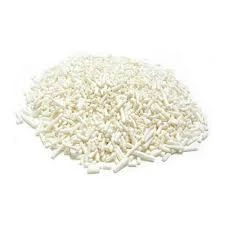
Current Trends in Phosphoric Acid Pricing and Market Outlook
The Dynamics of Phosphoric Acid Prices An Overview
Phosphoric acid, a vital industrial chemical, is primarily used in the production of fertilizers, food additives, and various chemical processes. The price of phosphoric acid is influenced by a myriad of factors, including raw material costs, production capacity, demand and supply dynamics, and geopolitical events. Understanding these elements is crucial for stakeholders in various industries as they navigate an ever-changing economic landscape.
Raw Material Costs
The production of phosphoric acid relies heavily on phosphate rock, sulfuric acid, and water. Fluctuations in the prices of these raw materials can significantly impact the overall cost of phosphoric acid. For instance, if the price of phosphate rock surges due to supply shortages in major producing countries, this can lead to increased production costs for phosphoric acid manufacturers. Consequently, these higher production costs often trickle down to consumers in the form of elevated prices.
Global Demand
The demand for phosphoric acid is primarily driven by its use in agricultural fertilizers. As the global population continues to rise and the need for food production increases, demand for phosphoric acid is expected to remain strong. Additionally, the growing awareness around sustainable agricultural practices and the shift toward organic farming can lead to variances in demand, as certain fertilizers may require different formulations involving phosphoric acid. This interplay of agricultural trends and consumer preferences plays a crucial role in shaping phosphoric acid prices on the market.
Production Capacity and Technology
phosphoric acid price

The production capacity of phosphoric acid plants is another significant determinant of price. When production facilities operate at maximum capacity, any increase in demand can lead to supply constraints, pushing prices upwards. Conversely, if new production facilities come online or existing ones expand their capacity, increased supply could stabilize or even lower prices. Moreover, advancements in production technology can enhance efficiency, reduce costs, and ultimately affect pricing dynamics in the phosphoric acid market.
Geopolitical Factors
Geopolitical events can also greatly impact phosphoric acid prices. Political instability in major phosphate-producing countries, such as Morocco or China, can disrupt supply chains and create volatility in the market. Trade policies, tariffs, and export restrictions can further exacerbate these conditions, leading to sudden spikes in prices. Companies must remain agile and informed about global political developments to effectively mitigate risks associated with these external factors.
Market Trends and Projections
Recent trends indicate a gradual increase in phosphoric acid prices due to a combination of rising raw material costs and steady global demand, particularly from the agricultural sector. As environmental concerns continue to rise, industries may shift toward greener alternatives that incorporate phosphoric acid in newer, innovative formulations. This shift could create opportunities and challenges for manufacturers, requiring strategic adjustments to remain competitive.
In conclusion, the price of phosphoric acid is influenced by an intricate web of factors, including raw material costs, global demand, production capacity, and geopolitical dynamics. As the world adapts to changing agricultural needs and sustainability goals, the phosphoric acid market will continue to evolve. Stakeholders must remain vigilant and responsive to these factors to navigate the complexities of pricing in this essential industry. Understanding these dynamics not only helps businesses make informed decisions but also opens avenues for growth and innovation in the future.
-
Why Glacial Acetic Acid Food Grade Is Essential in FlavorNewsMay.26,2025
-
Surging Export Growth of Food Additives in ChinaNewsMay.26,2025
-
How Ammonium Nitrate Fertilizer Boosts Crop YieldsNewsMay.26,2025
-
How 1,2,3-Benzotriazole Shields Plastics from UV DegradationNewsMay.26,2025
-
Cyanide in Gold Mining: Protecting People and the PlanetNewsMay.26,2025
-
Aluminum Hydroxide in Modern Sunscreen FormulationsNewsMay.26,2025
-
Understanding Synthetic Rubber OptionsNewsApr.27,2025
Hebei Tenger Chemical Technology Co., Ltd. focuses on the chemical industry and is committed to the export service of chemical raw materials.
-

view more DiethanolisopropanolamineIn the ever-growing field of chemical solutions, diethanolisopropanolamine (DEIPA) stands out as a versatile and important compound. Due to its unique chemical structure and properties, DEIPA is of interest to various industries including construction, personal care, and agriculture. -

view more TriisopropanolamineTriisopropanolamine (TIPA) alkanol amine substance, is a kind of alcohol amine compound with amino and alcohol hydroxyl, and because of its molecules contains both amino and hydroxyl. -

view more Tetramethyl Thiuram DisulfideTetramethyl thiuram disulfide, also known as TMTD, is a white to light-yellow powder with a distinct sulfur-like odor. It is soluble in organic solvents such as benzene, acetone, and ethyl acetate, making it highly versatile for use in different formulations. TMTD is known for its excellent vulcanization acceleration properties, which makes it a key ingredient in the production of rubber products. Additionally, it acts as an effective fungicide and bactericide, making it valuable in agricultural applications. Its high purity and stability ensure consistent performance, making it a preferred choice for manufacturers across various industries.











